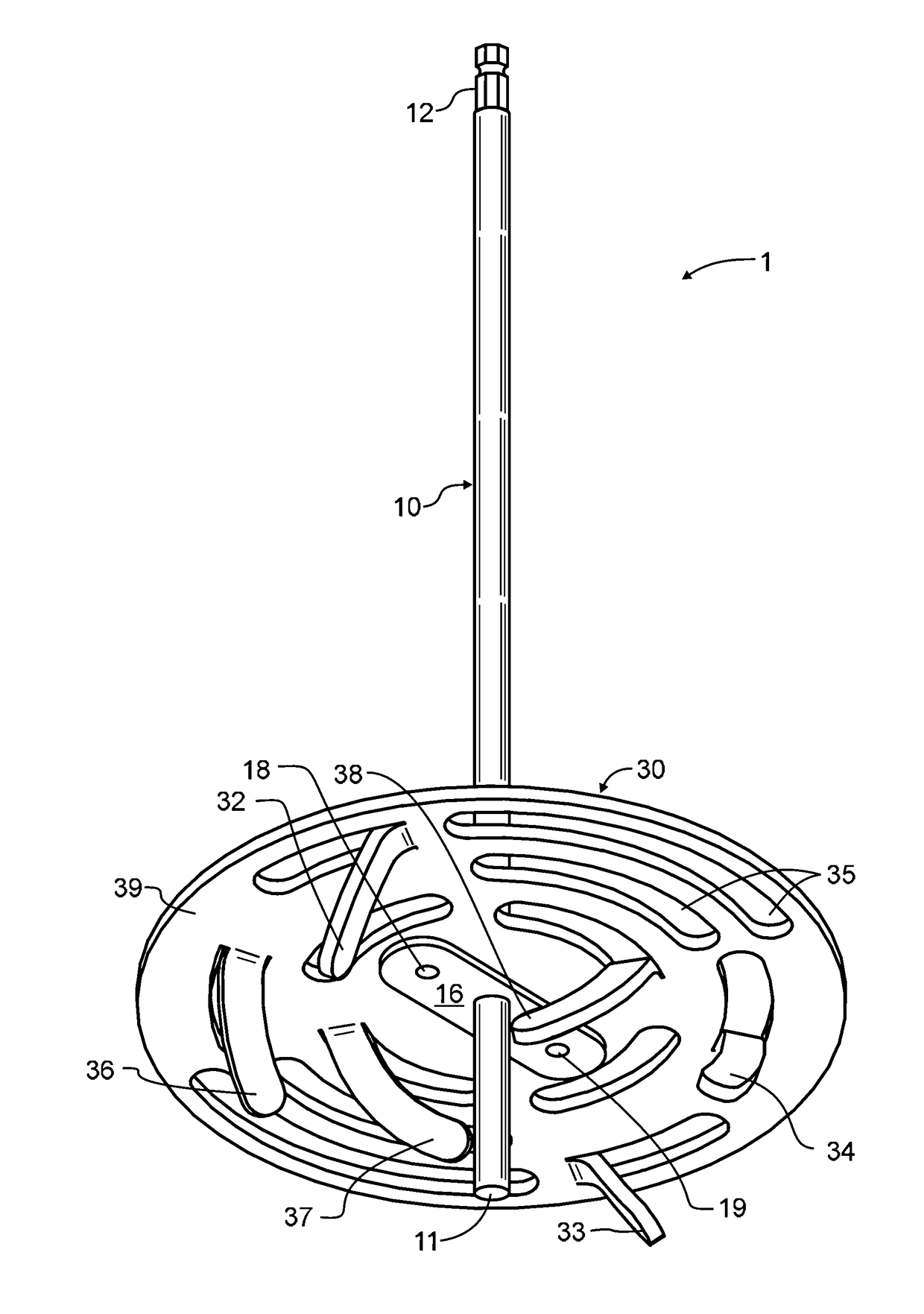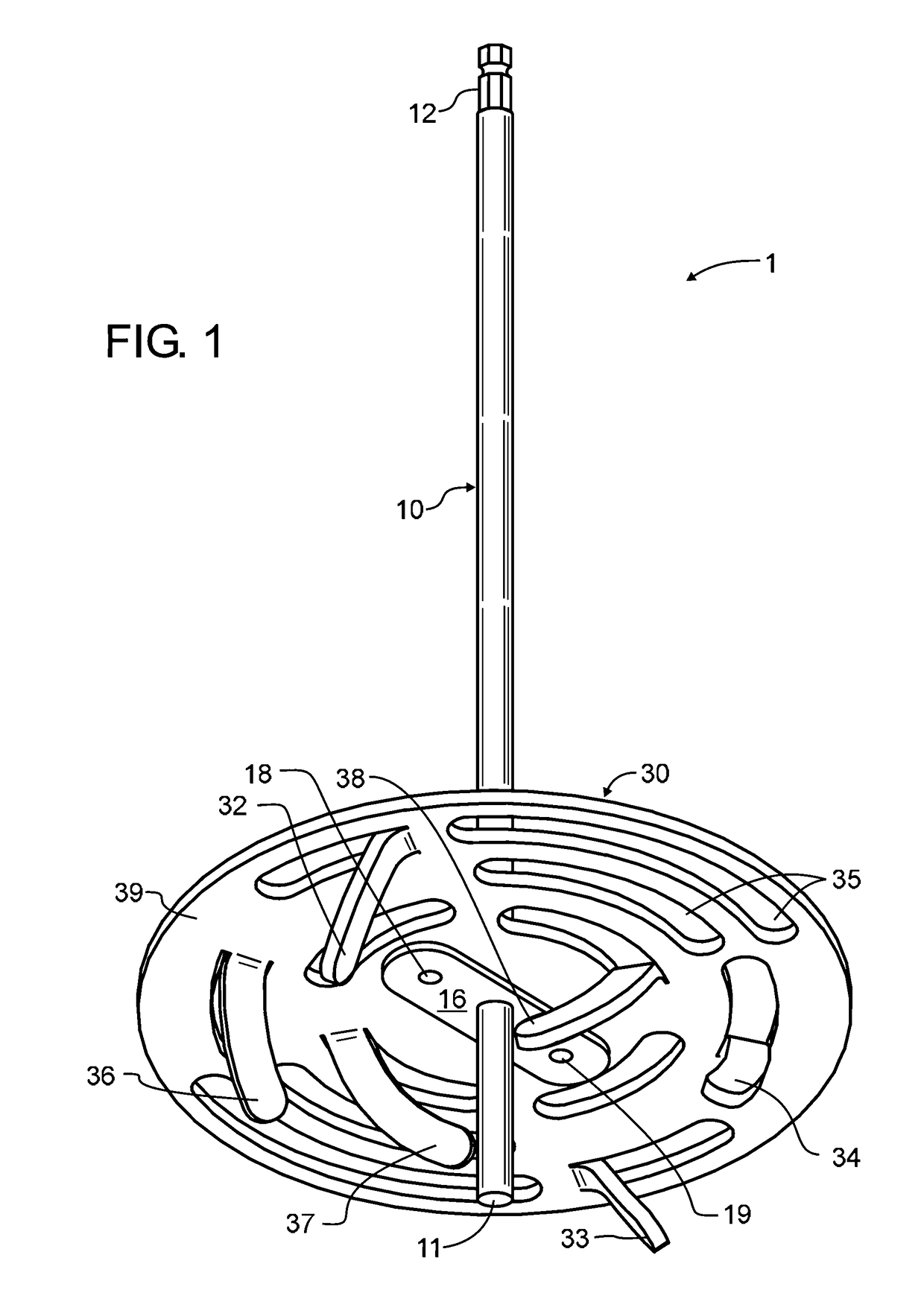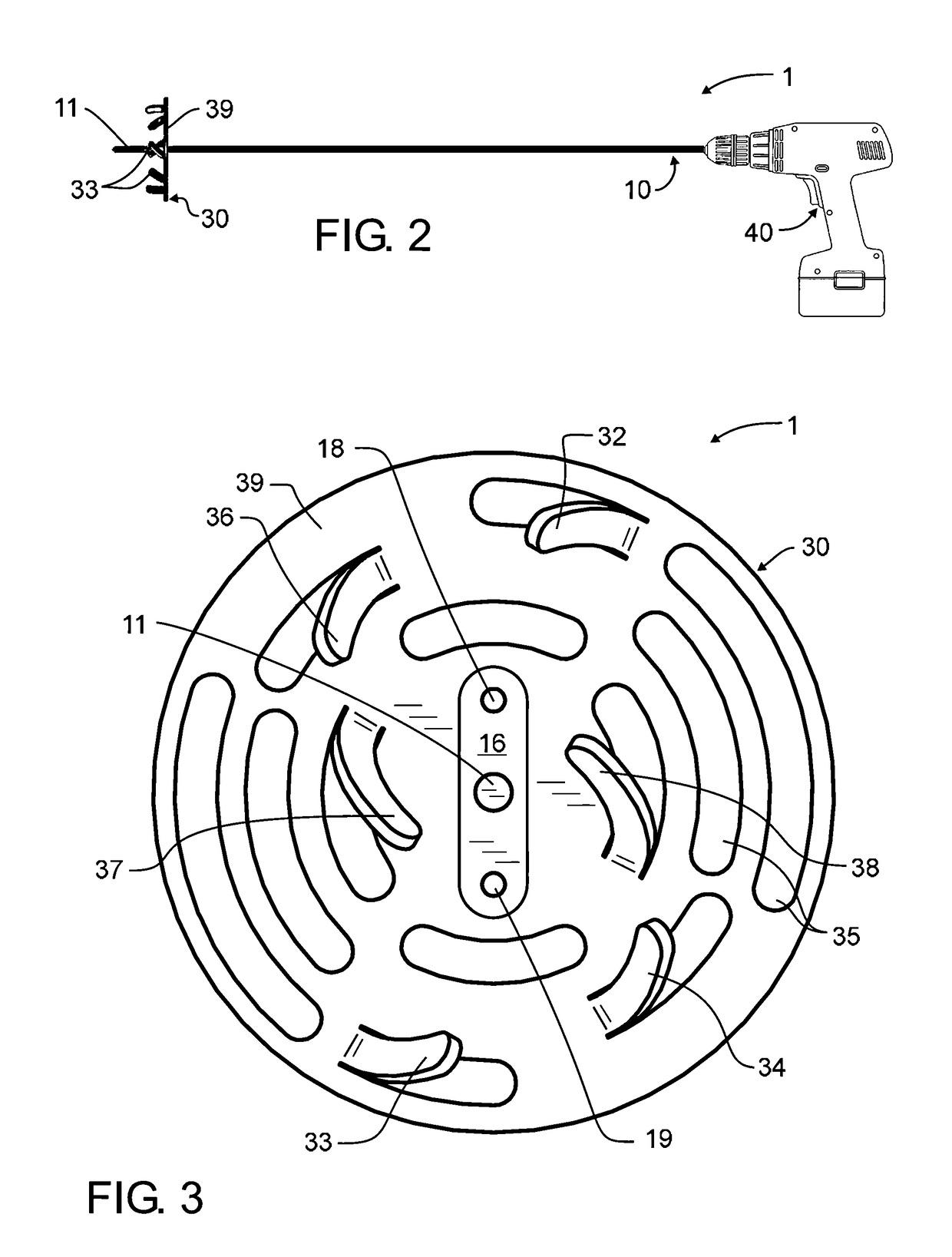Drill Attachment for Tilling Soil
- Summary
- Abstract
- Description
- Claims
- Application Information
AI Technical Summary
Benefits of technology
Problems solved by technology
Method used
Image
Examples
Embodiment Construction
[0030]Manifested in the preferred embodiment, the present invention provides a drill attachment for tilling soil 1 that can quickly and efficiently work the soil and that requires minimal labor to operate. In a preferred embodiment of the invention illustrated in FIGS. 1 and 3, drill attachment for tilling soil 1 is comprised of a drill shaft 10 and a till plate 30. Drill shaft 10 preferably extends beyond till plate 30 to define a stabilizer tip 11, thereby resisting sudden transverse movements of drill attachment 1 when in use. In addition, stabilizer tip 11 serves as a pilot or guide, helping to accurately position till plate 30 when working in close spaces. The length of stabilizer tip 11 is not critical to present invention, and so will be varied by a designer in light of the teachings described herein. Nevertheless, for exemplary purposes only and not limiting the present invention solely thereto, stabilizer tip 11 may be several inches in length.
[0031]A plurality of teeth 32-...
PUM
 Login to View More
Login to View More Abstract
Description
Claims
Application Information
 Login to View More
Login to View More - R&D
- Intellectual Property
- Life Sciences
- Materials
- Tech Scout
- Unparalleled Data Quality
- Higher Quality Content
- 60% Fewer Hallucinations
Browse by: Latest US Patents, China's latest patents, Technical Efficacy Thesaurus, Application Domain, Technology Topic, Popular Technical Reports.
© 2025 PatSnap. All rights reserved.Legal|Privacy policy|Modern Slavery Act Transparency Statement|Sitemap|About US| Contact US: help@patsnap.com



